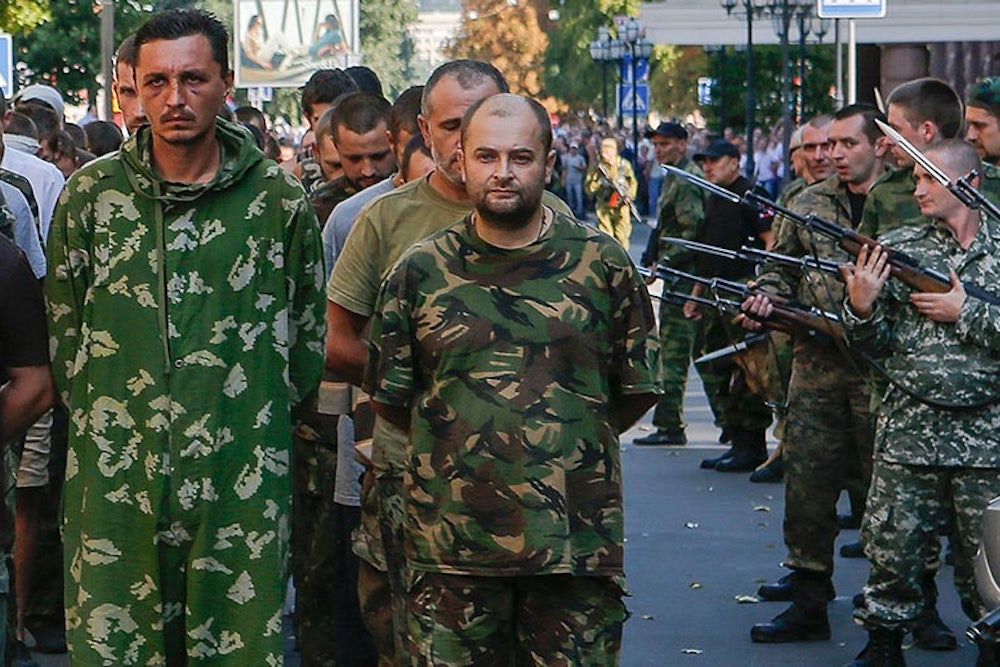Four months ago, this column focused on a photograph of a pro-Russian crowd in Donetsk hurling eggs at supporters of Ukrainian presidential candidate Yulia Tymoshenko. “If you’re going to have stuff thrown at you,” I observed, “eggs are preferable to rocks.” This is both literally true and somewhat inadequate, since, to adapt what Heinrich Heine said about book-burning, where people are once assaulted by eggs, they might eventually be hit by rocks, bullets, and heavy artillery.

In a way, then, this latest picture from Donetsk is a lot less violent than it could be—less violent, in fact, than are many others taken in the interim. The two pictures seem to form a natural pair, though, because they show people doing what people do in cities all over the world: walking. In the first, a walk from the shops was severely disrupted by pelted eggs. In this one, the walk has become a forced march by Ukrainian prisoners of war. Where before the route was lined by loutish civilians, now it is lined by uniformed pro-Russian separatists with rifles and bayonets. The situation has evidently deteriorated, but both prisoners and guards look like they could have starred in the earlier picture, to which this one is a kind of sequel. All that was needed was a change of costume. It’s easier to imagine the captors toiling away in butchers’ shops or garages than as combat Marines. Still, even they have the physiques of SEALs compared with the prisoner on the left, who looks like he barely had time, before pulling on his boots and fatigues, to clear up the empties and shut the bar he’d been running for 30 years. It’s the tall prisoner in the middle, however, who cuts the most abject figure. That camouflaged one-piece sniper outfit—or whatever it’s supposed to be—might have looked alluringly tough in the ads in Soldier of Fortune. Here, it turns him into a lanky toddler in a romper suit that is still several sizes too large.
In the background, meanwhile, is evidence of city life as it was a short time before: trees in full leaf and signs indicating—with heavy irony—a pedestrian crossing. An awful thing about civil conflict is, precisely, that it is so often littered with these reminders or traces of civilized life. This is even more pronounced in other, less tightly focused pictures of the same scene, which feature components of peacetime conspicuous by their absence here: women! Yes, extend the frame slightly and there are plenty of uniformed, weapon-wielding women among this guard of dishonor, making the prisoners’ humiliation complete.
Or not quite. That is achieved by something else that is out of shot. The dismal parade is followed by a vehicle hosing down the road to show that the prisoners—these shits—have fouled the ground they have been forced to cover. We began by pairing this picture with another taken in the same town back in May. This last detail takes us back 70 years to 1944, when prisoners of war were paraded in Moscow, also followed by street-cleaning trucks.
